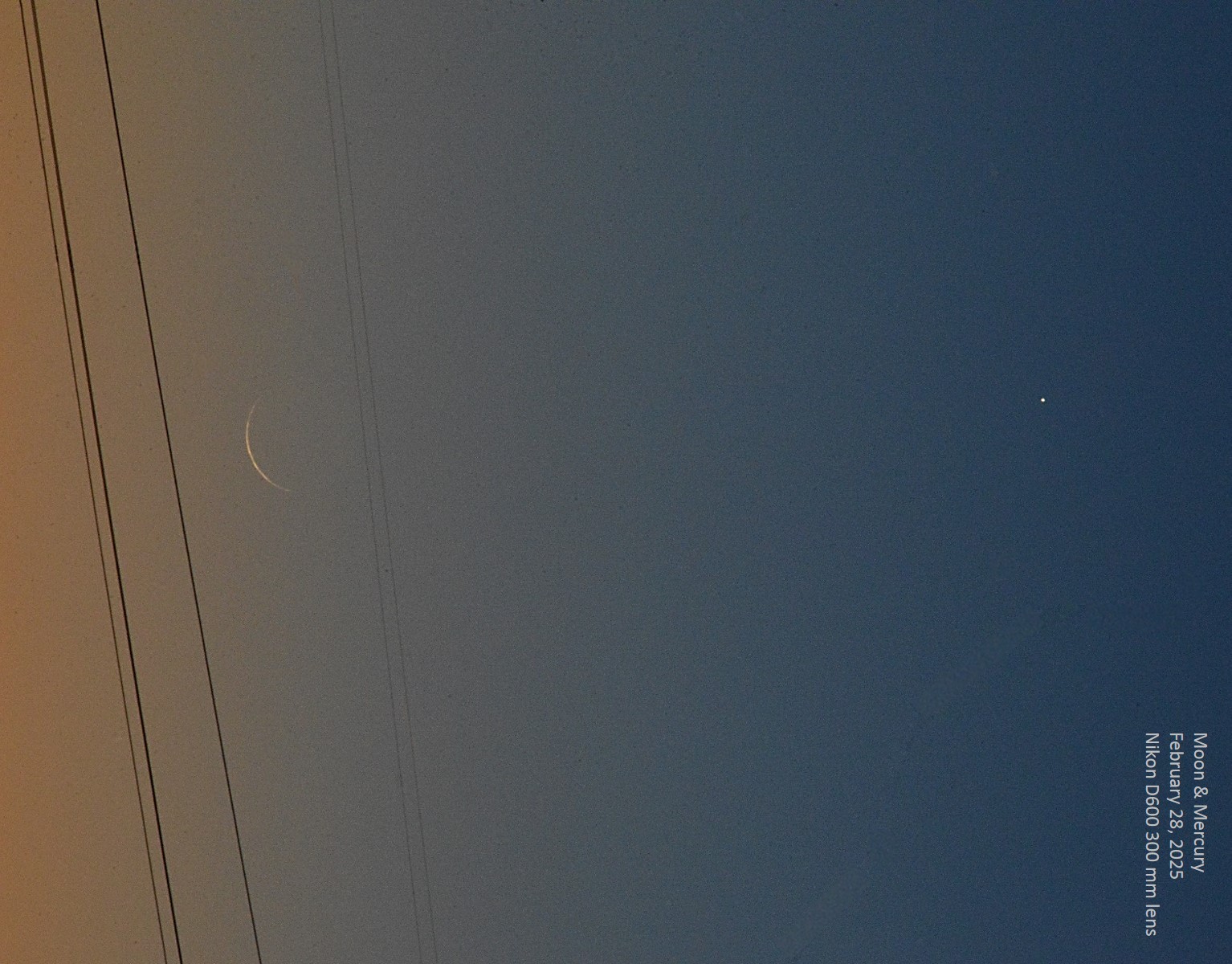
|
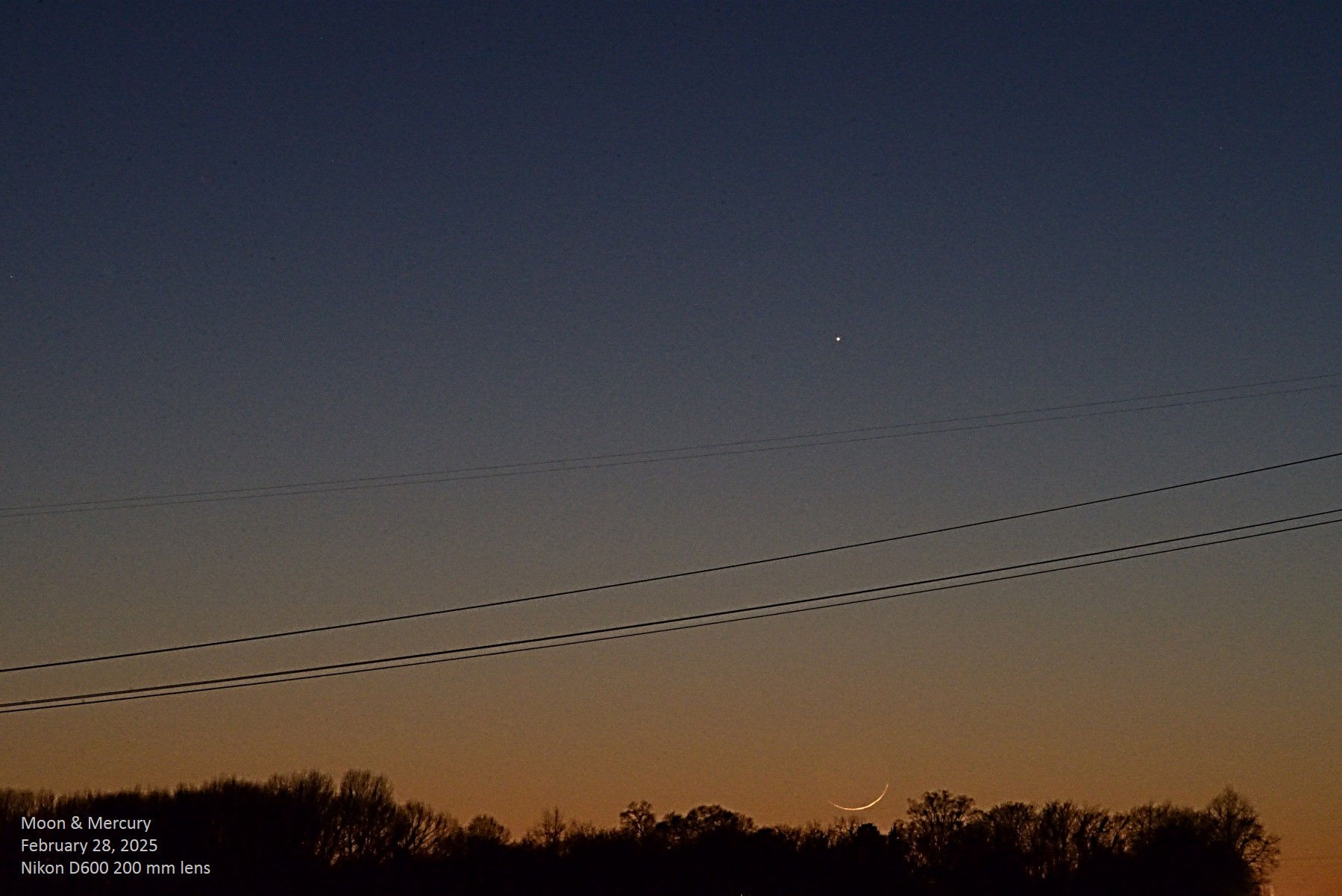
|
February 28: Moon and Mercury
A razor-thin crescent Moon hangs below Mercury in early twilight.
|
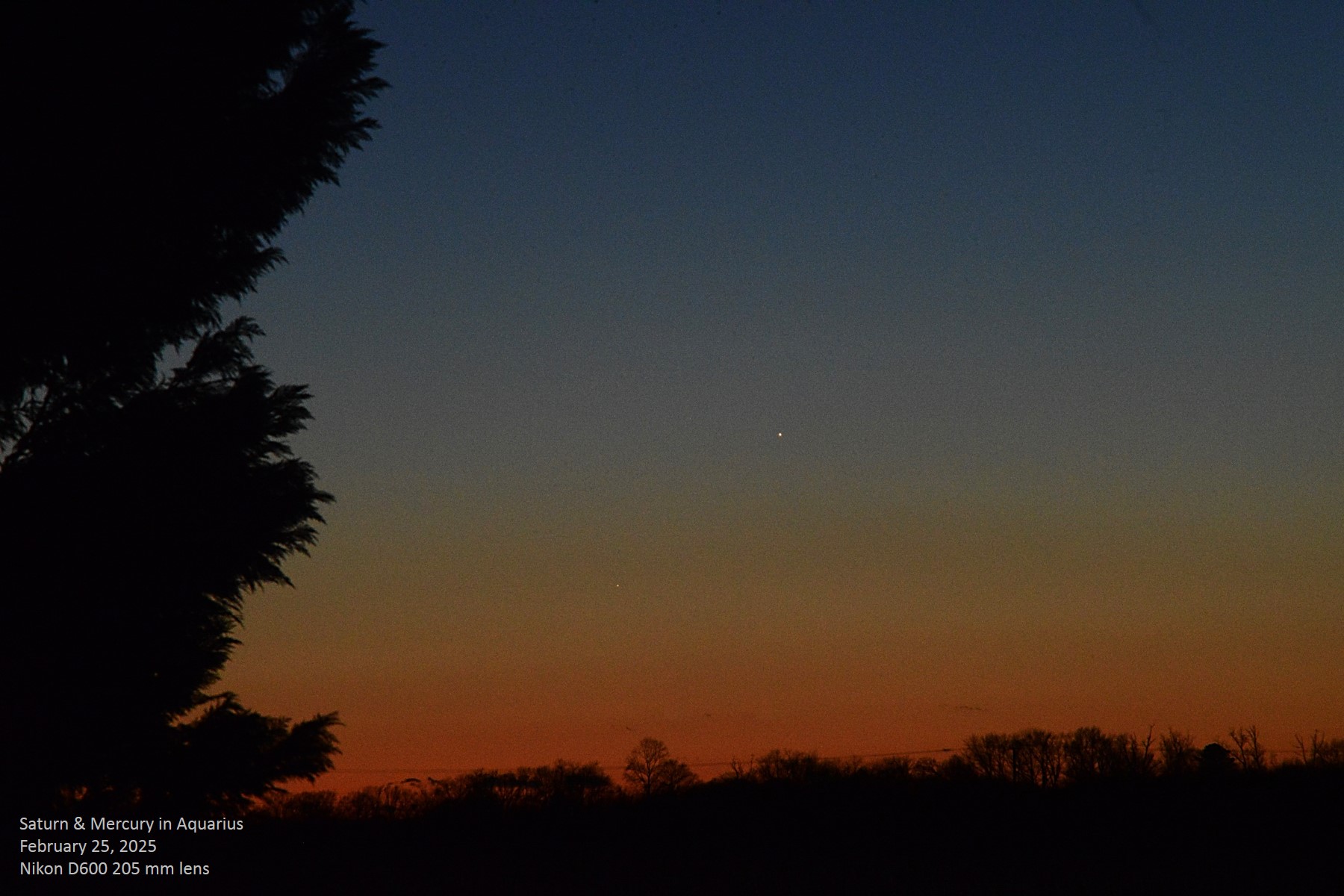
|
February 25: Saturn and Mercury
Mercury and Saturn beginning to separate this evening.
|
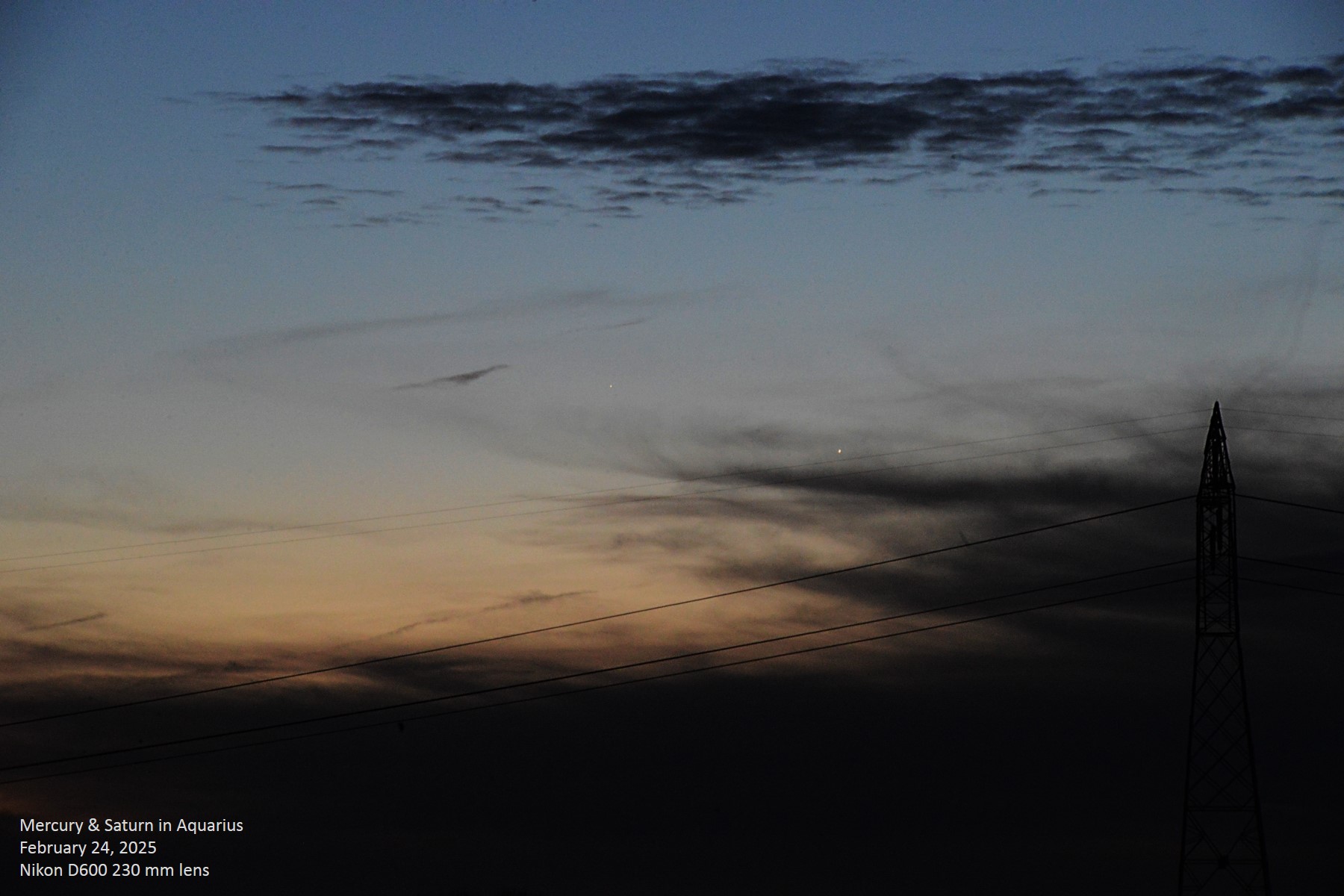
|
February 24: Saturn and Mercury Conjunction
Mercury and Saturn are fairly close together this evening in bright twilight.
|

|
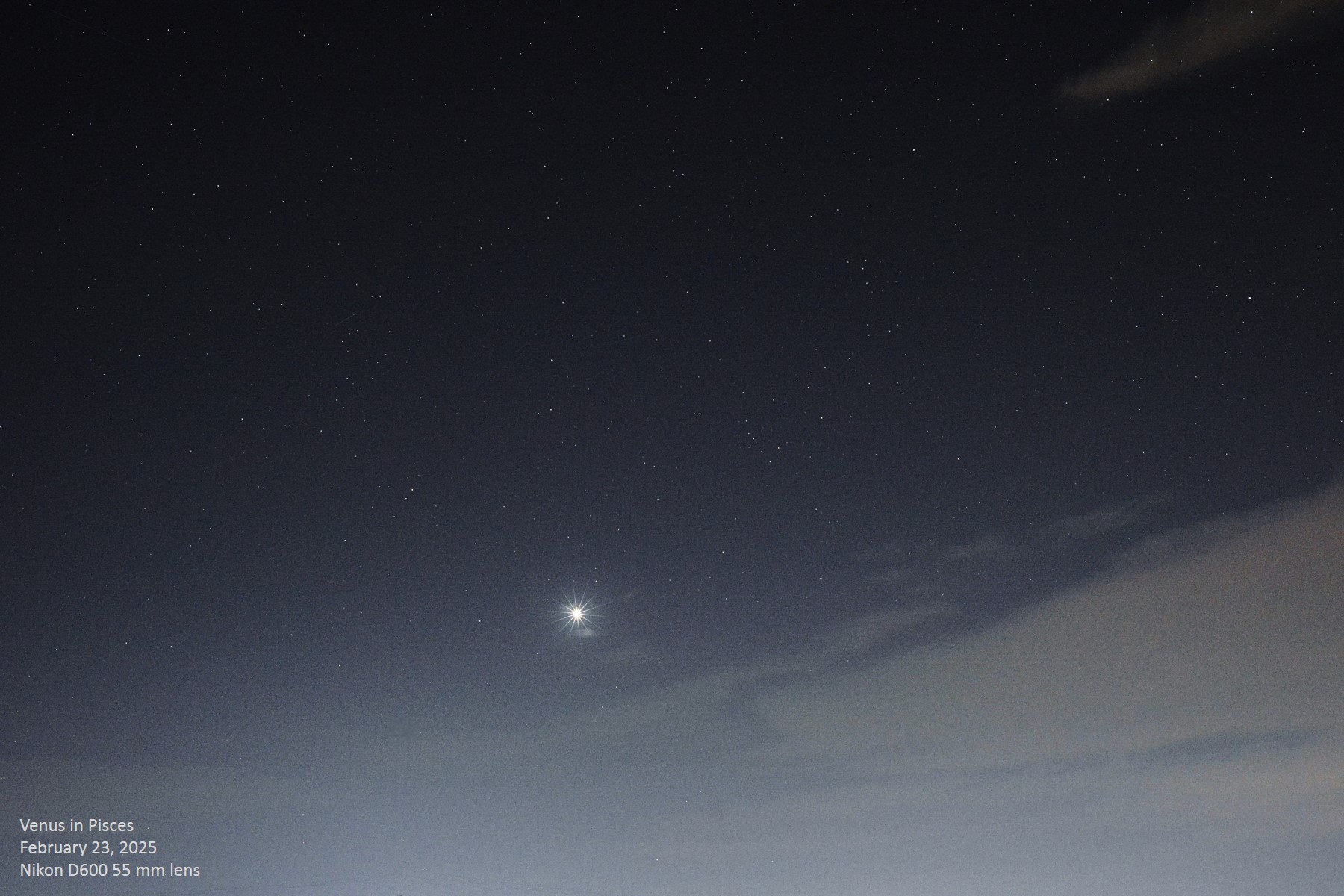
|
February 23: Venus, Saturn, and Mercury
Mercury and Saturn gathered in early dusk while Venus, much higher up than the other two,
is captured in darkness among the stars of Pisces.
|

|
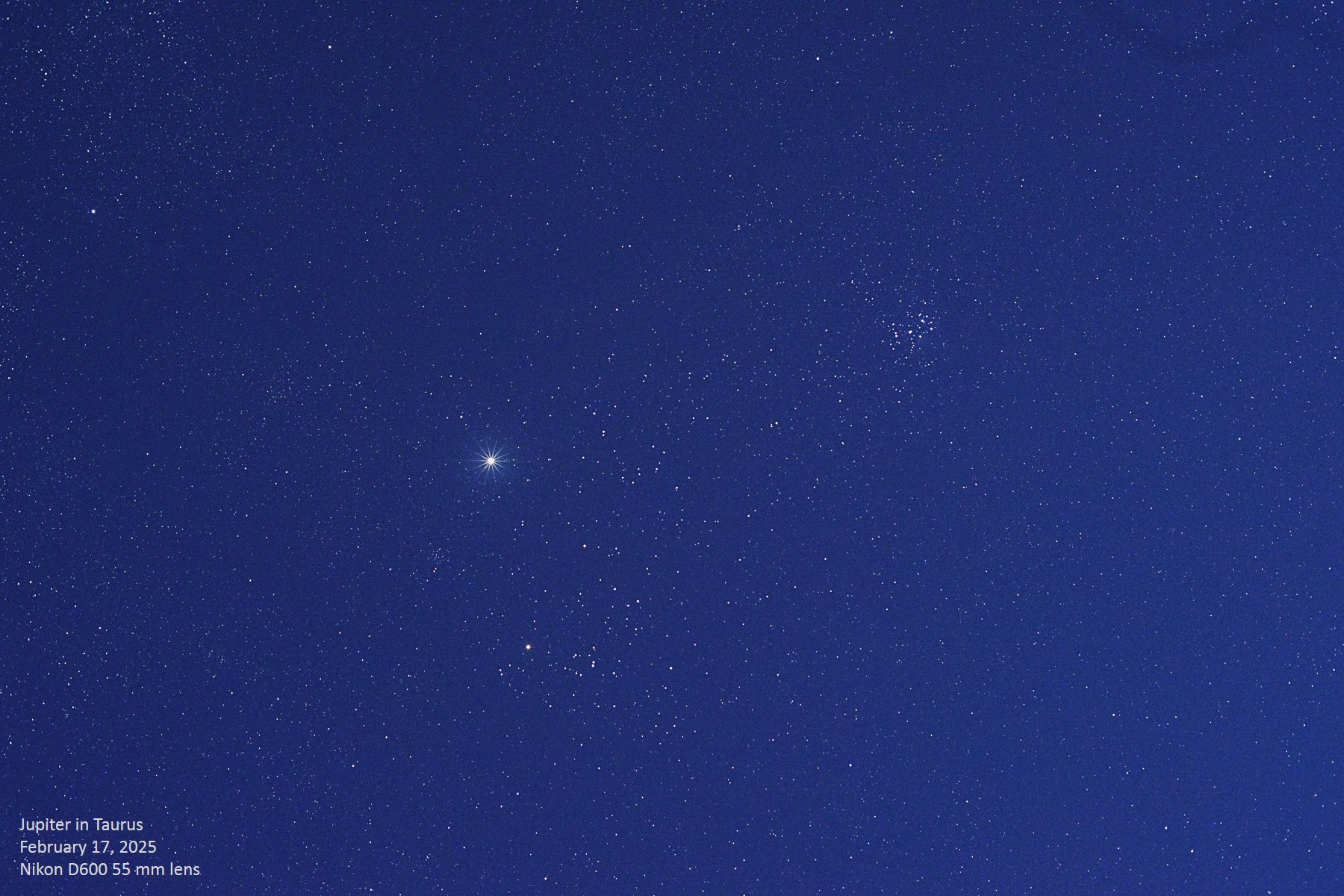
|

|
February 17: Venus, Jupiter, and Mars
On this extremely clear but cold evening after a tremendous wind storm,
we had a great view of Venus high in the west after sunset, then Jupiter
directly overhead as night fell and lastly Mars, high in the east.
|

|
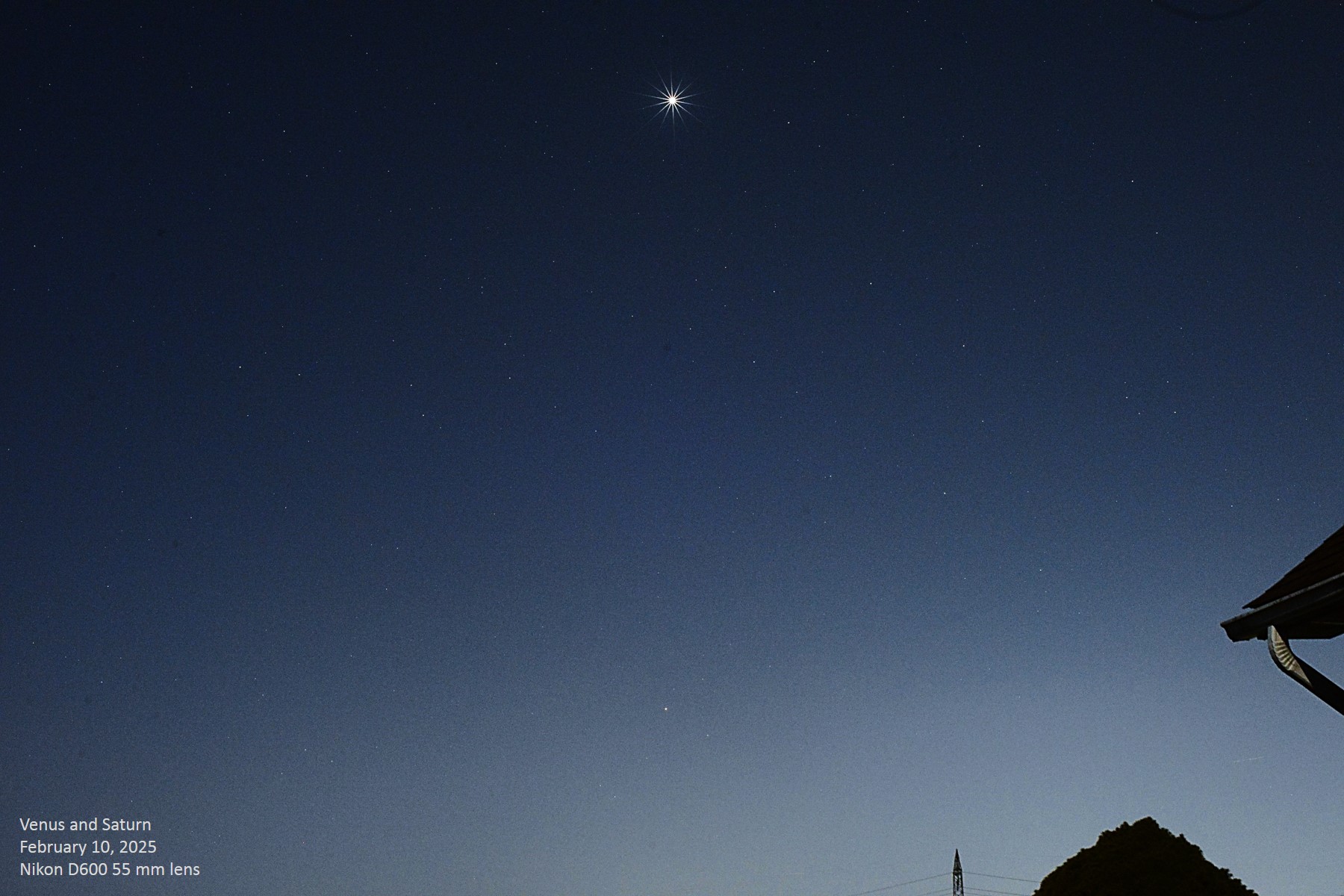
|
February 10: Venus Still Moving in Pisces
Venus continues to dominate the evening sky, but now just beginning to
slow down and ever so slightly trend lower each evening; also, Venus
continues to curve northward above the ecliptic. Saturn is sinking
lower in the twilight each day, so by now its motion against the stars
is difficult to discern.
|
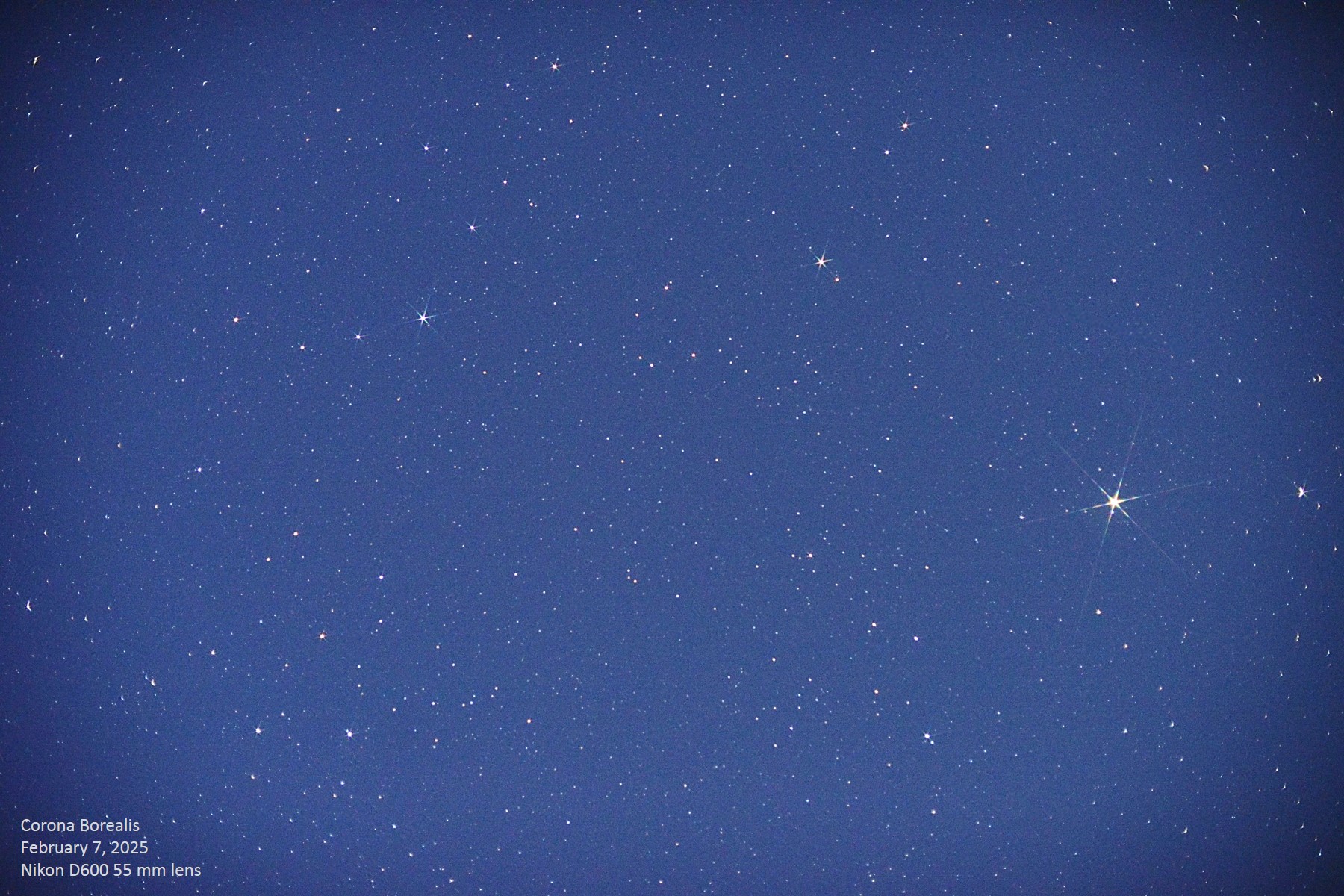
|
February 7: T Coronae Borealis
Yet another check in on T Coronae Borealis to see whether the star-sized hydrogen
bomb has gone off yet ~ it would appear that the answer is NO. The wait
continues.
|
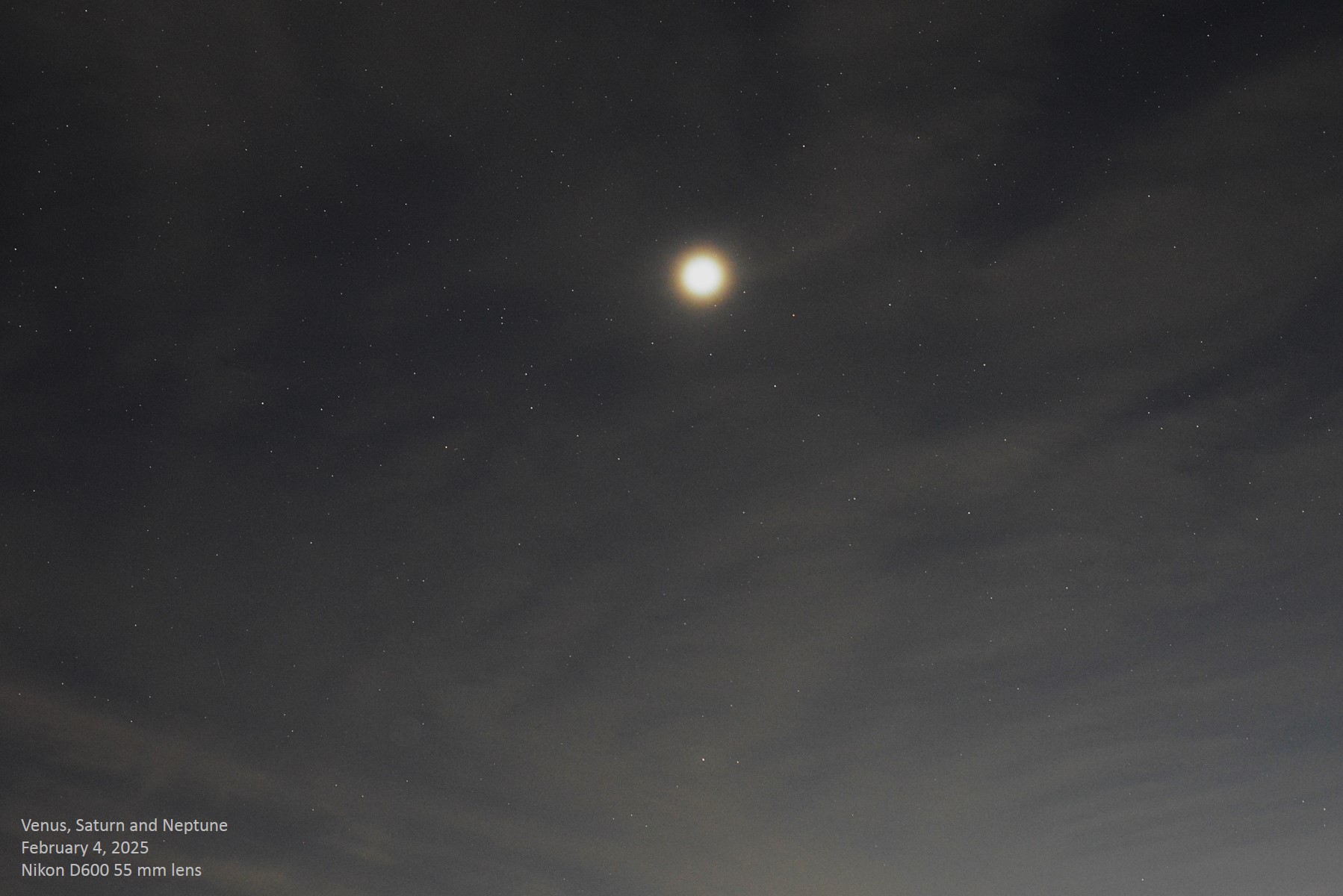
|
February 4: Evening Planets
Venus, Saturn and Neptune are arrayed along the ecliptic from Aquarius into
Pisces. In this view that was somewhat spoiled by clouds, Venus is
bloated into something that almost looks like a full Moon, while Saturn and
Neptune are faint. Later in the month, Mercury will emerge from the
glare and have a conjunction with Saturn and then Neptune.
|
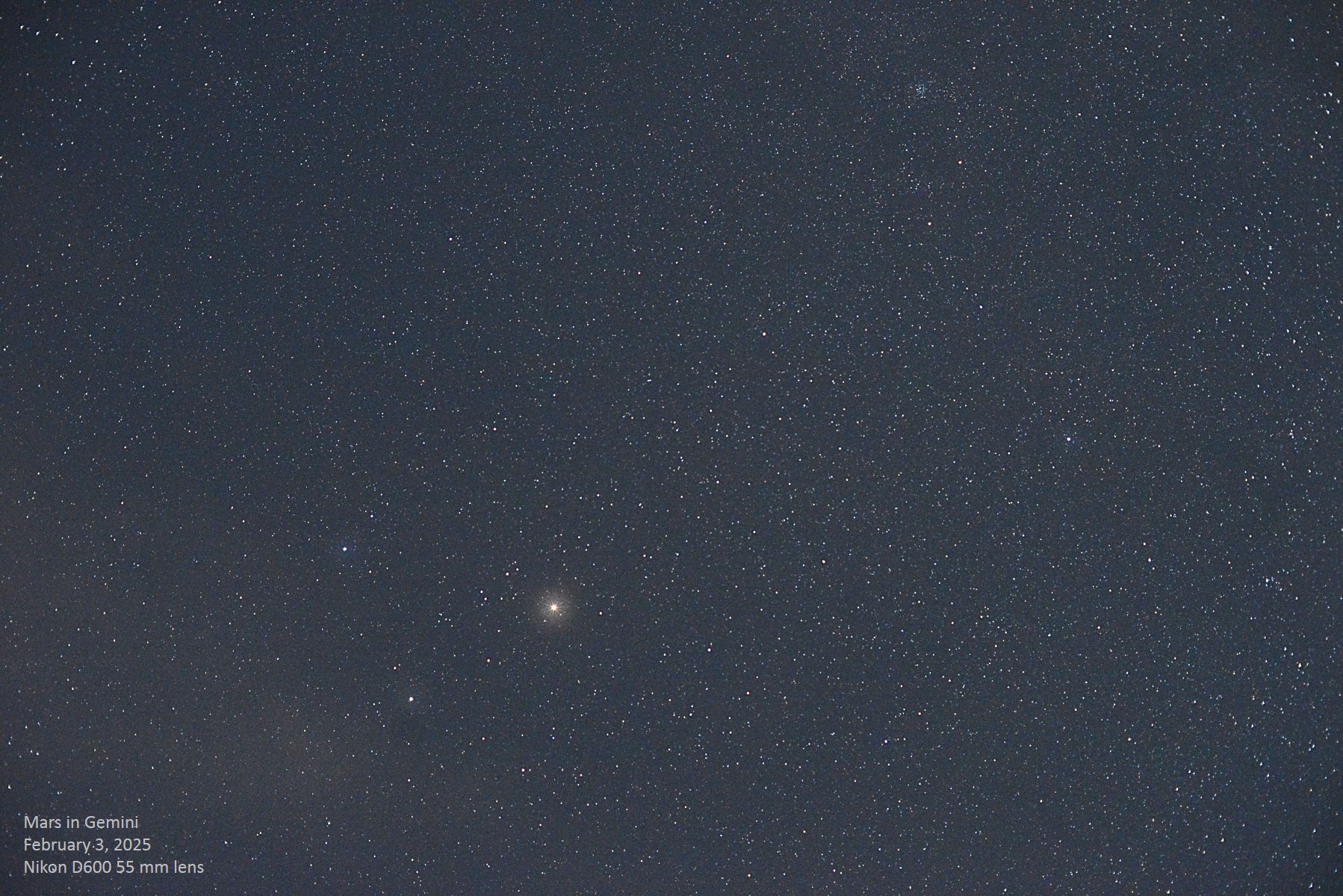
|
February 3: Mars Retrograding
Mars is still brighter than every star in the night sky except for Sirius, now
shining at magnitude -0.98 in Gemini, and making an isoceles triangle with the
heavenly twins, Castor and Pollux.
|